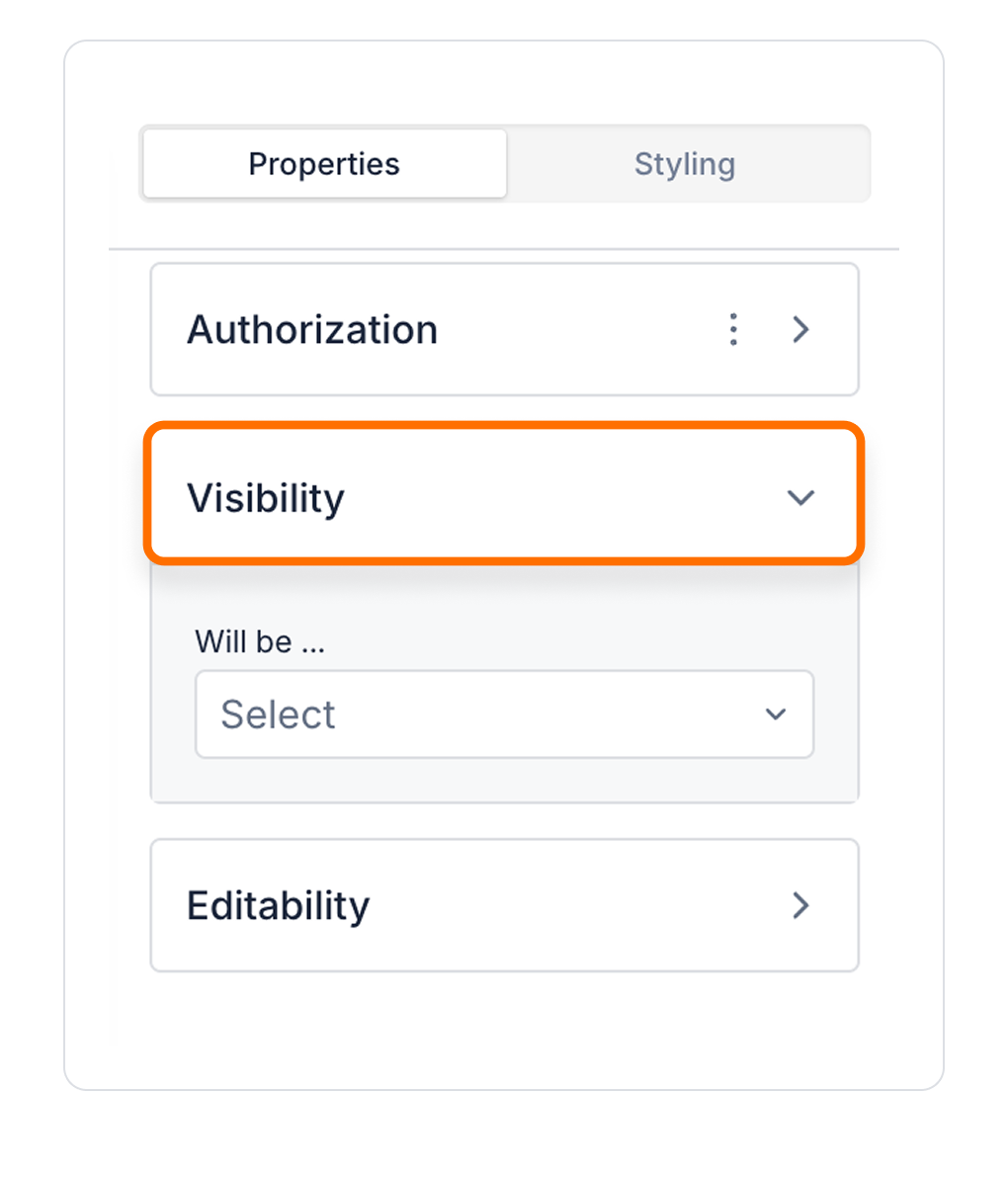


Kuika's Icon element is used to convey information quickly and effectively through visual elements in the user interface. Icons are small graphical icons that represent a specific function, state or theme. Icons are an effective way to make it easier for users to navigate your app and increase their engagement. For example, a settings icon can indicate that the user has access to the app's settings, while a heart icon can highlight favorite content. In this tutorial, you will learn how to visualize information and functionality in your app using the Icon element.

You can configure the properties of the Icon element in the Properties panel on the right sidebar.

The Icon element allows users to quickly recognize functions and improves the user experience of the application.
Authorization

To manage access control at the element level, you can use the Authorization section in the Properties panel.
Access Types
Anonymous
Allows all users to view the element without logging in.
Restricted
Restricts access to only verified users or specific roles.
Unauthorized Behavior (Hide / Disable)
If the user does not have the required role, you can specify how the element should behave in the Choose field:
This setting is used to manage how unauthorized users encounter the element.
Visibility

Always Visible: The element is always visible.
Hidden: The element is hidden.
Sometimes Visible: The element becomes visible based on specific conditions.
When Sometimes Visible is used, AND / OR groups can be added directly, allowing visibility rules to be grouped and more complex scenarios to be managed easily.
To configure the setting:


By customizing your elements with the Styling Panel, you can create impressive interfaces for your web and mobile applications. In this section, you can configure the following settings:
By following these steps, you can configure the Area Chart element to suit your needs.